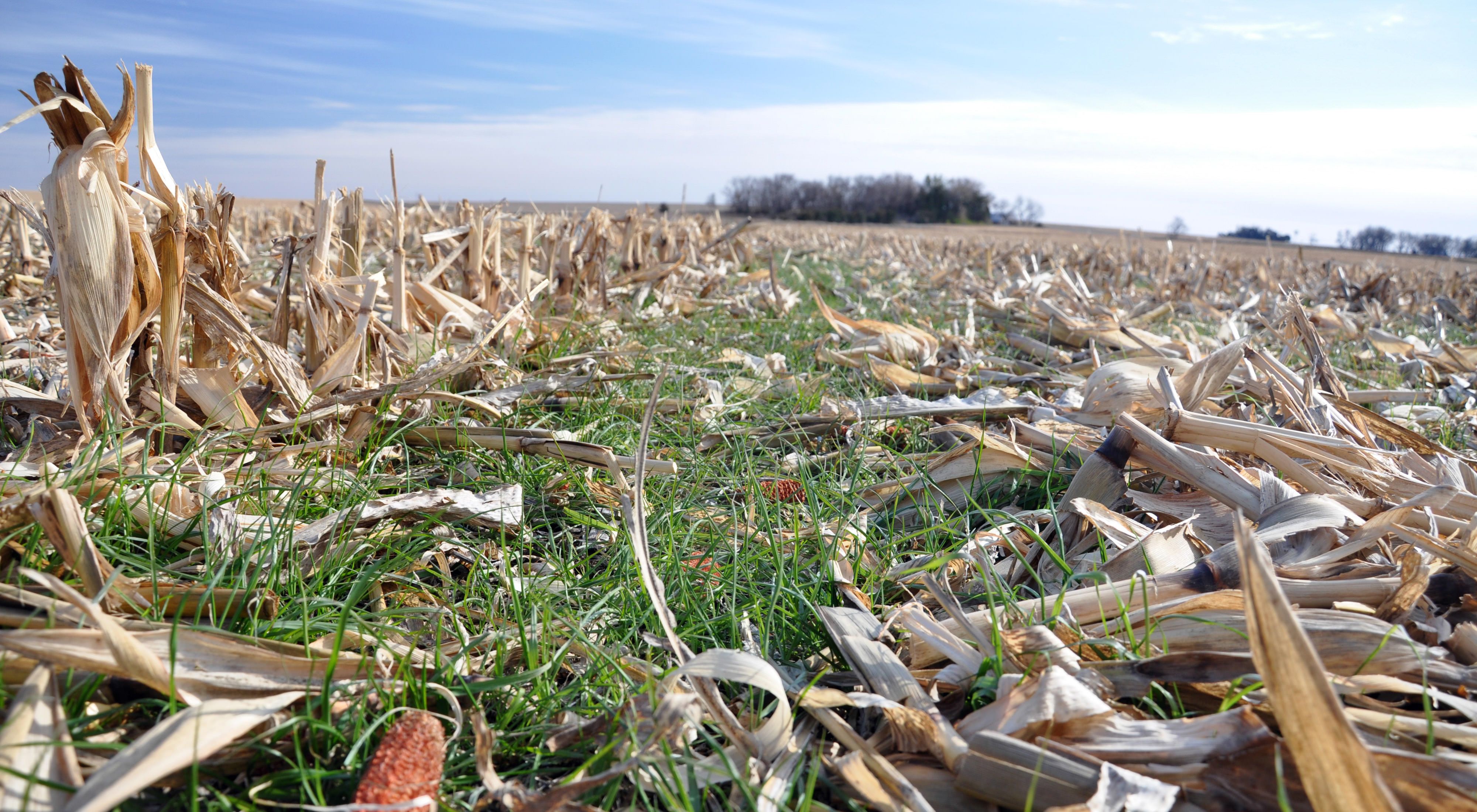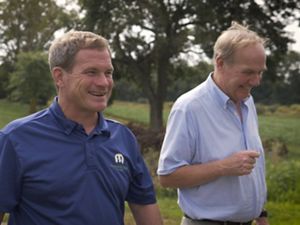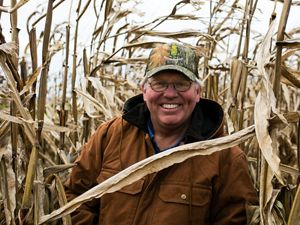Indiana Farmers Use Conservation Practices on Rented Cropland
Collaboration and trust are key to success for farmers and landowners.
Farmers grow the crops that clothe, feed and fuel a growing world on more than 396 million acres of land across the U.S., making them among our greatest allies in conservation. Since more than 40 percent of that farmland is rented land, it’s increasingly important for farmers and landowners to work together to adopt land management practices that are good for their bottom line and good for nature.
Related Reading
Dig deeper about how non-operating landowners (NOLs) and their farmers can collaborate.
Learn More About Conservation on Rented FarmlandAdvancing landowner and farmer collaborations is particularly important in the Midwest where 62 percent of farmland—and more than 80 percent in certain counties—is rented land.
Jessica and Michael Strasburger, a young couple farming in the broad green fields of west-central Indiana, know first-hand the economic and environmental value of working with landowners to adopt conservation practices. As co-owners of Strasburger Farms, the couple work in partnership with Michael’s parents, Roger and Laurel, to grow corn, soybean and alfalfa on 4,700 acres, a good portion of which is rented land.

“In our farming, we try to keep all our landlords’ needs in mind,” says Jessica, a fifth-generation farmer. “We try to meet those needs while also doing what we feel is the best for the land.”
About 20 landowners provide a patchwork of rental acreage to the Strasburgers, including retired farmers; farmers’ children and grandchildren who inherited farmland and live in distant cities; businesses and nonprofit institutions; and foreign investors.
“All of the landowners have different styles, different needs and different views on how to manage their land,” says Michael. But for all their differences, he adds, they all want a good return on their land investment.
Bob Strasburger, Michael’s grandfather, is no different.
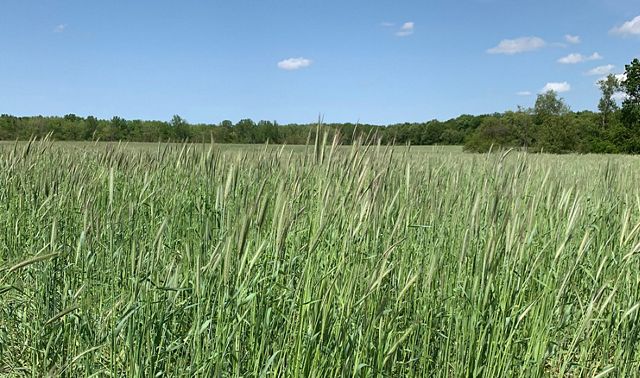
All in the Family
Bob rents 270 acres to Strasburger Farms, a practice that is common within farming families. In fact, research shows that nearly 80 percent of U.S. farmers rent land from family members or friends.
Three years ago, Michael approached his grandfather about trying cover crops—crops grown in the off season to protect and enrich the soil—and no-till—not plowing or turning over the soil—on his farmland. But Bob was skeptical. “I had to bite my tongue about three years ago when they planted a 200-acre field in cereal rye cover,” he says with a laugh. “But it turned out that the soybean crop afterward brought in 70-plus bushels an acre, which was terrific. I was sold.”
Bob notes another positive from the cover cropping on his farm. “It’s nice not to see the roadside ditches filled with black farm soil—from erosion,” he says. “We need to keep the soil where it belongs—on the farm.”
Practices like cover crops and no-till can make a tremendous difference in reducing erosion, improving water quality in nearby streams and building resilience to extreme weather like droughts or floods, in addition to the economic benefits these practices offer.
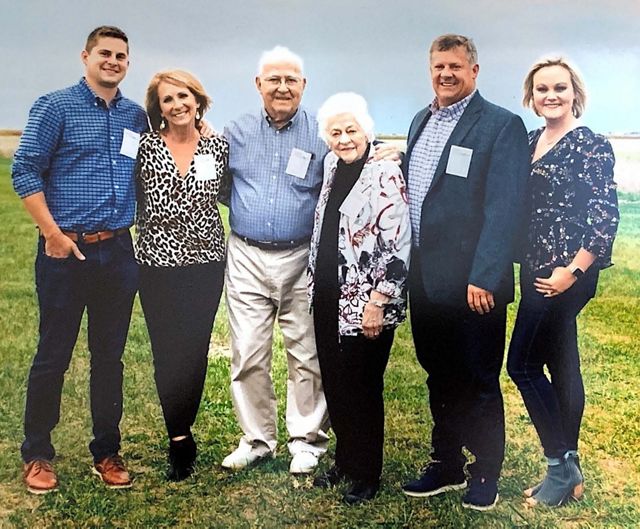
Reaping the Benefits of Conservation
Michael, who studied agricultural economics at Purdue University, introduced conservation agriculture practices to Strasburger Farms in 2014.
No-till initially appealed to the Strasburgers for financial reasons. “Economically, it makes a ton of sense to do conservation practices,” says Michael. “We don’t need as much hired manpower, not as much fuel. It shows when we run the numbers. And as we focus on our soil health, we can become much more resilient.”
Related Reading
What Can Farmers Do to Adapt to Extreme Weather Events?
Read the Cool Green Science StoryResiliency is important, says Michael, because the Strasburgers have seen increasing extremes in rainfall over the past few years, with heavy rains early in the season and dry weather in late summer. “I think here in Indiana we’ll continue to get these big, heavy rains in May and June, which can cause ponding and flooding, those sorts of issues,” he says. “That’s why we’ve got to manage our fields differently than we did years ago.”
After early successes with conservation practices on lands they owned, the Strasburgers began working with their landowners to expand the practices to the rented lands. Today, nearly 100 percent of the acres they farm are no-till, and about 30 percent is planted in cover crop rotations. In the next five years, Michael plans to work with his landowners to double the amount of cover crop acres.
“The Strasburgers and their landowners are making an impact far beyond their farm,” says Mike Dunn, director of freshwater conservation for The Nature Conservancy in Indiana. “Indiana, Iowa and Illinois have the highest proportion of rented farmland and the highest levels of nitrogen runoff in the Mississippi River Basin.”
Each year massive amounts of nitrogen and phosphorous from sewage treatment plants, farms and other sources run off into the 31-state Mississippi River Basin, posing health hazards to people and wildlife, raising water treatment costs, and contributing to the annual Gulf of America dead zone.
“When farmers like the Strasburgers and their landowners collaborate on conservation agriculture, they are not only investing in the long-term viability of their soil and farm, but they’re helping to ensure clean water supplies here and all the way down to the Gulf,” says Mike.
Quote: Jessica Strasburger
We’re working on changing the narrative about our farm so we can sell our environmental stewardship to landlords as an added benefit.
Nurturing Trust for Conservation
As with any relationship, the Strasburgers have found that nurturing trust is key to collaborating with the landowners on conservation practices for the long term.
“One of our landlords, we’ve been with him for more than 30 years,” says Michael. “Things are good with him, and we have been able to renegotiate our lease every year. We are doing no-till and cover cropping on his land because he gets it, and we want to be there for the long term.”
The Strasburgers are committed to demonstrating that consistent use of conservation practices yields a stronger farm operation, healthier soils, improved resilience and increased investment security.
“We’re working on changing the narrative about our farm so we can sell our environmental stewardship to landlords as an added benefit,” says Jessica. “I know I want my family to have quality farm ground for the next generations here. I want us to leave it better than when we got it. We want to be the best stewards possible to encourage a healthy environment around us. We want that for everyone.”
